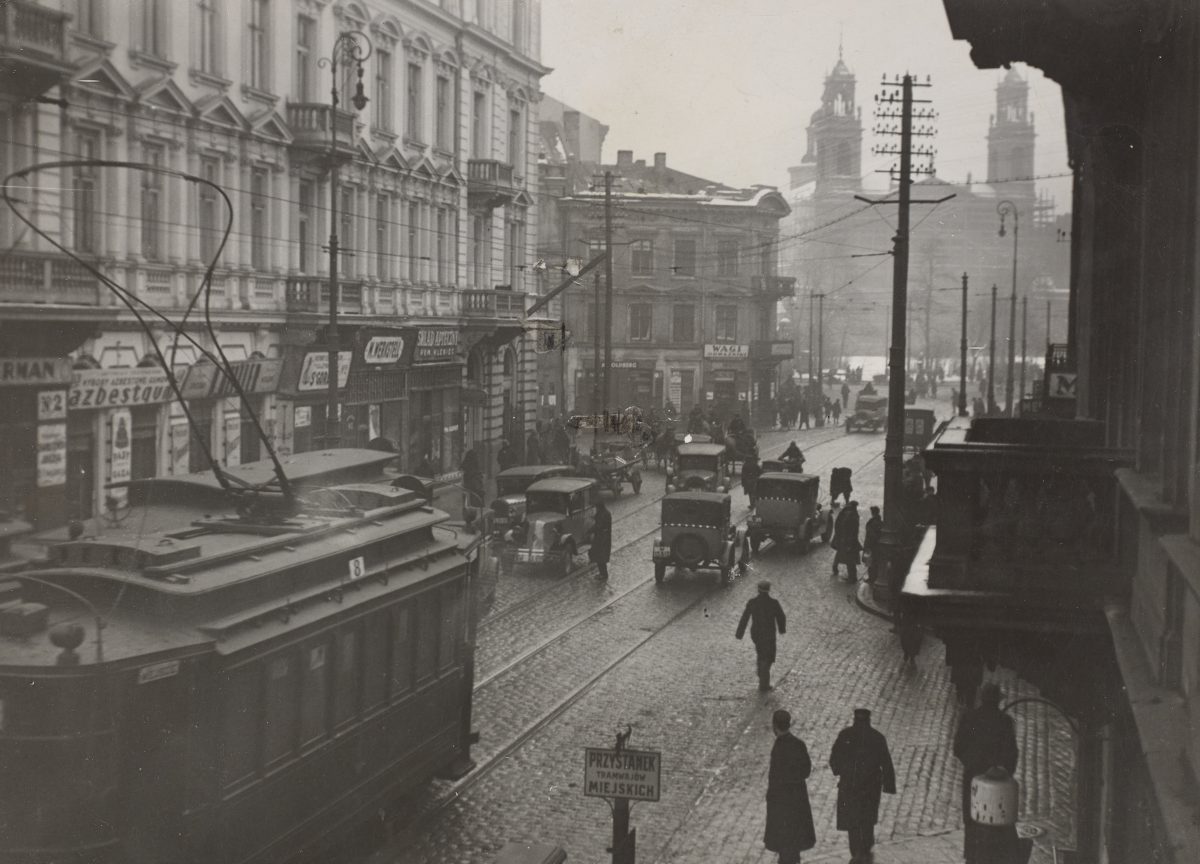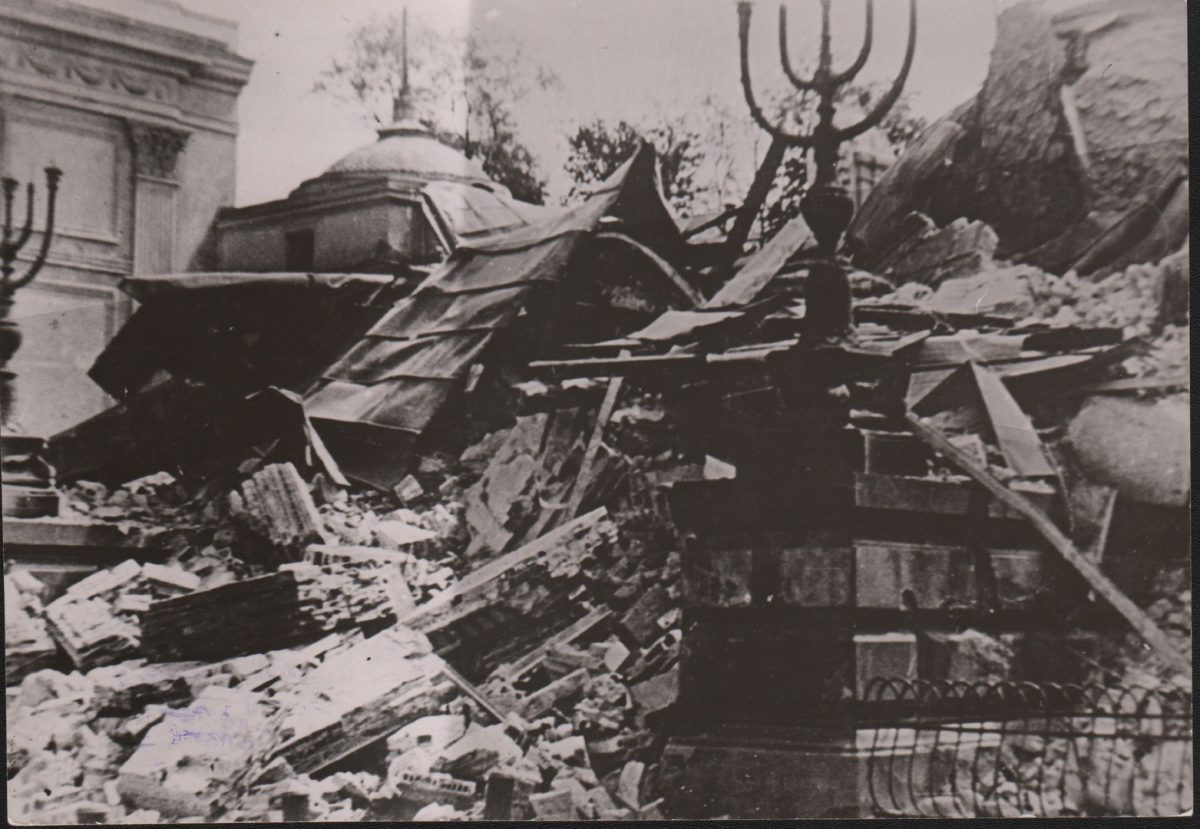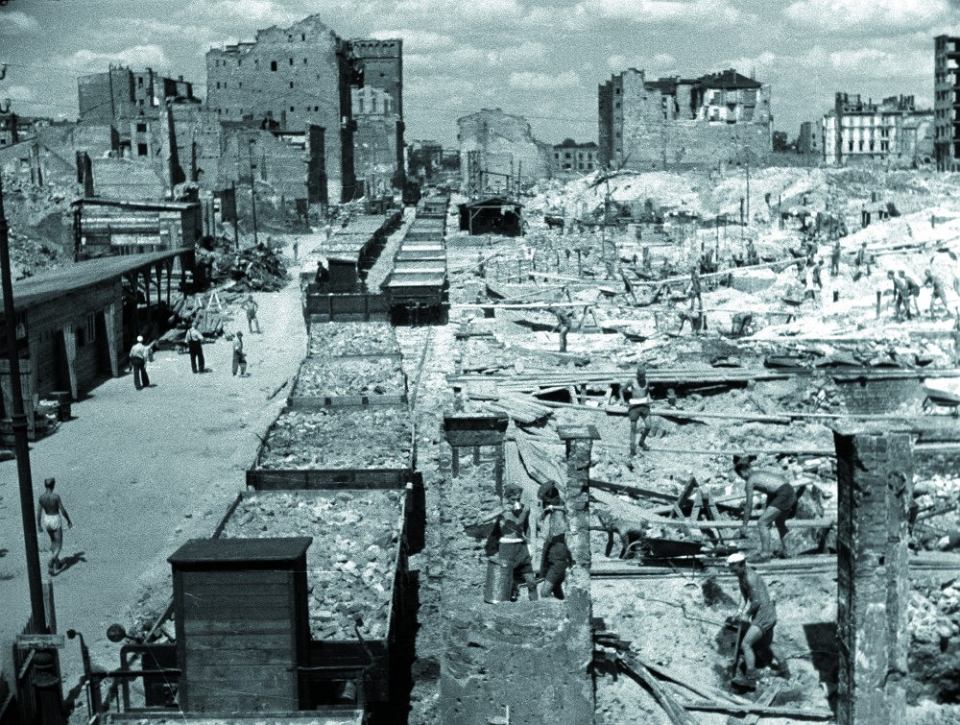The faces of the capital at the WGM’s fourth outdoor exhibition at Grzybowski Square
“Uncovering Warsaw – Three Views” is an exhibition which presents three portraits of the city: pre-war, wartime, and reconstruction times. Three perspectives make up the image, history, and culture of contemporary Warsaw. On 8 September, on Sunday at noon, we invite you to the opening of the exhibition at Grzybowski Square, which will be accompanied by a Varsavianist stroll.
The fourth outdoor exhibition of the Warsaw Ghetto Museum – its curator is Dr Magdalena Piecyk, deputy head of the WGM’s Exhibition Department – is an invitation to take a stroll along selected streets of the capital, which has changed its face many times over just a few decades. The title three portraits make up the image, history, and culture of contemporary Warsaw. Visiting it, today you can look at it from the perspective of the past – what had been demolished and rebuilt on the rubble. The exhibition „Warsaw in Three Portraits” consists of twelve boards, placed at Grzybowski Square, from the direction of Próżna Street. They present the transformation of twelve places in downtown Warsaw – Bank Square, streets: Złota, Chłodna, Leszno, Gęsia, Zielna, Graniczna, and Królewska, as well as Iron-Gate Square and Mirów Market, the Synagogue at Tłomackie Street, and Grzybowski Square. The photographs come from the collections of the Jewish Historical Institute, the Institute of Art of the Polish Academy of Sciences, the State Archives of Warsaw, the Warsaw Uprising Museum, the Mazovia Province Warsaw Monument Conservator, the Polish Press Agency, Foundation 39, the Library of Congress, and the National Library.
Photo: Graniczna St., 1934 (The National Library of Poland)

The Sunday opening of the exhibition will be accompanied by the fourth Varsavianist stroll, organized by the WGM’s Education Department. Jagna Kofta, a sociologist and educator, will take the participants on a walk in the footsteps of the streets, the history of which is brought closer by the exhibition displays.
The first photo: rubbles of a destroyed The Great Synagogue of Warsaw at Tłomackie St., after 16 May 1943 (JHI). The second one: Zielna St., 1948 (PPA)


In the beginning of the 20th century, Warsaw was a densely populated city, with a network of narrow streets, well type fully enclosed courtyards, and hundreds of store signs, advertising various commodities. The capital of that time impressed with Art Nouveau architecture and was teeming with life. With the outbreak of World War II, Warsaw became the centre of the struggle against the occupant. Soon after the outbreak of World War II, German soldiers appeared in the city’s scenery, and its streets were crisscrossed by the walls of the ghetto, forming the largest open-air prison right in the city’s centre. About one third of Warsaw citizens were crammed there, who tried to survive in very difficult conditions. After the ghetto was liquidated in 1943, the loss of life reached unimaginable proportions, devastating the streets of this once culturally diverse place. When the war ended, only a few fragments of buildings emerged from a vast sea of ruins and rubble. Several thousand people had been hiding among the wreckage. Soon, the process of rebuilding Warsaw began so that the capital would regain its former greatness and splendour.
Photo above: a fragment of the ghetto wall at 20, Złota St. (The Library of Congress). Photo on the Current Events page: Gęsia St, October 1939 (Michał Podstawka`s collection (Fundacja Warszawa 1939)
Prepared by: Anna Kilian

